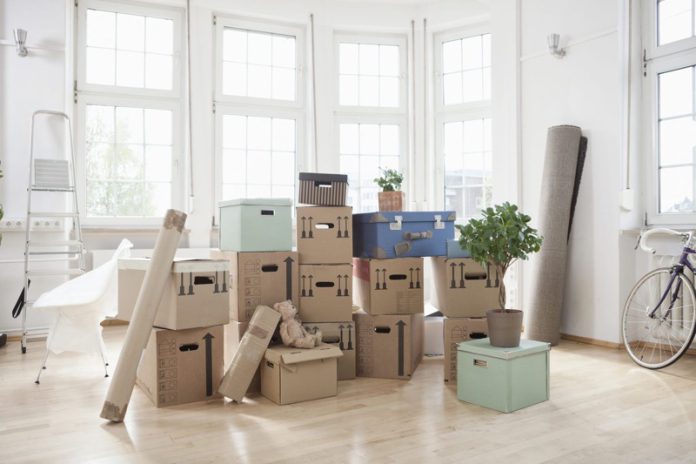Moving can be a stressful and overwhelming experience, especially when it comes to packing. However, with the right packing hacks, it can be a breeze. Whether you are moving across town or across the country, efficient packing is key to a successful move. In this article, we will explore some of the top packing hacks to help you pack efficiently and effectively.
Packing for a successful move doesn’t have to be an intimidating process if you follow our top packing hacks which are provided by a trusted moving company. These will help you pack efficiently for an efficient move. Our tips can save time, money, and stress!
Understanding the Importance of Efficient Packing
Efficient packing is key to any successful move, saving both time and stress during transit while decreasing damage risk to belongings.
Here are some reasons why efficient packing should be prioritized:
Reduce Stress: Moving can be an emotionally exhausting experience, but efficient packing can help ease that anxiety. Knowing your belongings are safe can free up mental space to focus on other aspects of the move without fear for their security.
Effective Packing Techniques Reduce Risk: Efficient packing techniques can help lower the risk of damage during transportation, by protecting items from shifting and colliding during movement. Properly packed items should remain secure against shifting and contact between themselves during travel.
To pack efficiently, it is key to have a plan. Begin by decluttering and clearing away items you no longer use or need, before organizing your belongings into categories and packing accordingly using sturdy boxes, packing paper and bubble wrap for fragile items and labeling each box with its contents and room it belongs. By following these simple guidelines you will ensure an efficient move.
Creating A Packing Plans
Packing for a move requires careful preparation. Below are a few steps we recommend taking to create an effective packing plan.
Establish a Timeline
The first step in developing a packing plan is setting a timeline. Decide how much time there is before your move, and estimate how long it’ll take you to pack everything up. Be realistic about how much you can accomplish each day by setting realistic goals and setting an attainable timeline for packing everything up.
Prioritizing Items
Now that you have a timeline in place, it is time to prioritize your items. Begin by packing seasonal clothing or decorations which won’t be needed before your move; move on to items used only occasionally like kitchen gadgets or sports equipment before finally packing items that you use daily or weekly like toiletries or clothing.
Staying Organized
To stay organized when packing, create a checklist of all the items that must be packed. Divide this list by room and include an estimate for how many boxes will be required in each. As each item is packed off your list, mark it off.
Utilizing a packing plan can make your move faster and less stressful. By setting a timeline, prioritizing items, and creating a checklist – you will be well on your way towards an efficient move!
Choosing the Right Packing Materials
Packing materials should be chosen carefully when packing for a move to ensure that all of your possessions remain undamaged during transportation. Here are some essential packing supplies you should have on hand: Boxes (of various kinds).
Choose the appropriate box type when moving items containing sensitive data such as books or electronic equipment to ensure their protection during transit.
Here are some types of boxes you may require for this: Small: Great for packing heavy objects such as books or tools and canned goods; medium boxes: Ideal for clothing, toys and small appliances
Large boxes: Ideal for packing lightweight items like bedding, pillows and lampshades. Wardrobe boxes: With their hanger attachments designed specifically to transport clothing without folding it over, wardrobe boxes make transport easy without needing to fold it all first! * Protective Materials are also recommended!
Use of protective materials during a move is critical to ensure the integrity of your belongings and their safe transport. Below are some key materials for use during such an endeavor:alitat Bubble wrap is great for protecting delicate objects like glassware, figurines and electronics – providing ample cushion against potential breakages during transportation.
Packing Paper is perfect for wrapping fragile items like dishes and glasses safely and preventing breakage during transportation. Packing Peanuts offer extra cushioning by filling in empty spaces in boxes. And finally Labeling Tools provide much-needed organization tools.
Labeling boxes correctly to help make unpacking easier is crucial, and here are the tools necessary for the task: Permanent markers: Use permanent markers to label your boxes with their contents and which room they belong in.
Colored labels: Labeling boxes by room will help make unpacking simpler; color-coding makes identifying them much simpler!
Choosing appropriate packing materials is key to making sure that your move goes smoothly, including boxes, protective materials and labeling tools. Doing this efficiently while protecting your belongings during transport.
Packing Techniques for Different Items
Clothing
When packing clothing, vacuum-sealed bags can help save space. You can find these at most home goods or department stores. Rolling garments instead of folding them is another space-saver and helps prevent wrinkles; while for delicate items like dresses or suits it may be wiser to invest in garment bags to protect them during transit.
Electronics
To safely pack electronics, we advise using its original packaging whenever possible. Otherwise, wrap the item in bubble wrap or foam padding and place it inside a sturdy box marked as fragile with “this side up” as an indicator for potential damage.
Fragile Items
Packing fragile items such as dishes and glassware requires extra caution when shipping. We advise wrapping each individual item in bubble wrap or packing paper before placing them all together in a sturdy box with plenty of cushioning material, such as packing peanuts or crumpled paper. Label the box “fragile” and mark its side up to prevent damage.
Pack heavy items at the bottom and lighter items on top to reduce shifting during transit and reduce damage risk. By following these packing techniques, you can ensure a successful move with all of your belongings intact at their new destination.
Utilizing Space Efficiently
Packing efficiently is key when it comes to moving. Here we discuss some effective strategies for packing your belongings to maximize space usage and ensure the move goes as smoothly as possible.
Packing in Layers
One of the best ways to take full advantage of space when moving is packing items layer by layer in order of size in a box, starting with larger items at the bottom and layering smaller ones on top. By doing this, you can make full use of available space by filling up empty spaces within it with smaller items on top and layering heavier ones below for optimal movement during transport. It is also wise to pack heavier objects first in order to protect fragile goods during their move.
Filling Empty Spaces One way of optimizing the use of space is to fill empty spaces in boxes with packing material like bubble wrap, packing peanuts or clothing or towels – filling these empty spaces will prevent items from shifting during their move and reduce risk.
Avoid Overpacking
While it can be tempting to stuff every last box with as much stuff as possible, overpacking will actually make your move harder. Heavy boxes that require two people or more to move will only increase the difficulty and risk of damage to your belongings, so it is crucial that boxes be packed at an acceptable weight in order to prevent overloading and unnecessary stress on you during transport. It’s crucial that your move be planned so as to minimize risks associated with packing boxes to a reasonable weight and avoid overloading.
Utilize these space-efficient packing hacks to make your move more organized and efficient. Pack in layers, fill any emptiness with items from elsewhere in the room, and avoid overpacking to maximize available space and protect your belongings during transit.
Final Preparations Before Moving
Before any move, we always double-check everything to make sure we haven’t overlooked anything critical. We walk through each room to check all items have been packed and labeled accurately as well as ensure any fragile objects are cushioned and secured within their boxes.
Box Security
In order to ensure our items reach their new destination safely, we take extra measures when it comes to securing our boxes. Specifically, we use high-grade packing tape to seal them shut during transport and label them with our name, the room they belong in and any specific handling instructions.
Organizing for Unloading
When we pack, we consider how we will need to unpack our items. This way we can pack those that we will need first in clearly marked boxes and store them easily within the moving truck – this makes unpacking much simpler and quicker!















